Demolition Contractors Soquel
Top 10 Demo Contractor in Soquel
Get multiple Demolition Experts quotes for your project today! Compare profiles, reviews, accreditations, portfolio, etc... and choose the best deal.

Southern California Construction Development Inc
52 reviewsIrvine, USTeam Trust Commitment SOUTHERN CALIFORNIA CONSTRUCTION DEVELOPMENT 南加州建筑开发工程公司秉承着以最专业的团队,提供最一流的服务. 通过我们的一砖一瓦为城市增添全新的风景线。无论是住宅的翻新, 还是商业大楼的全新开发, 我们都有着值得信赖的专业, 优秀的团队, 及专业的技术, 确保每一个工程的品质。 MISSION 团队合作我们相信公司最大的资产就是员工,和客户像一个团队般的合作,因为我们认为双方对等的信任才是成功最大的关键。诚信原则忠於品质、诚实和勤奋,拥有业界最高道德标准,坚持做对的事情,打造一家以信任为基础的公司,秉持高标准的服务品质,尤其注重对于客户的诚信,打造不可取代性。长久承诺相信和客戶的长久关系是公司的根本命脈,积极的付出及精准的市场分析,把握机遇使我们与众不同。我们承诺,我们视每一位客户为"尊敬的朋友"。
- Services
- Why Us?
- Our Team
- Gallery
Get Quote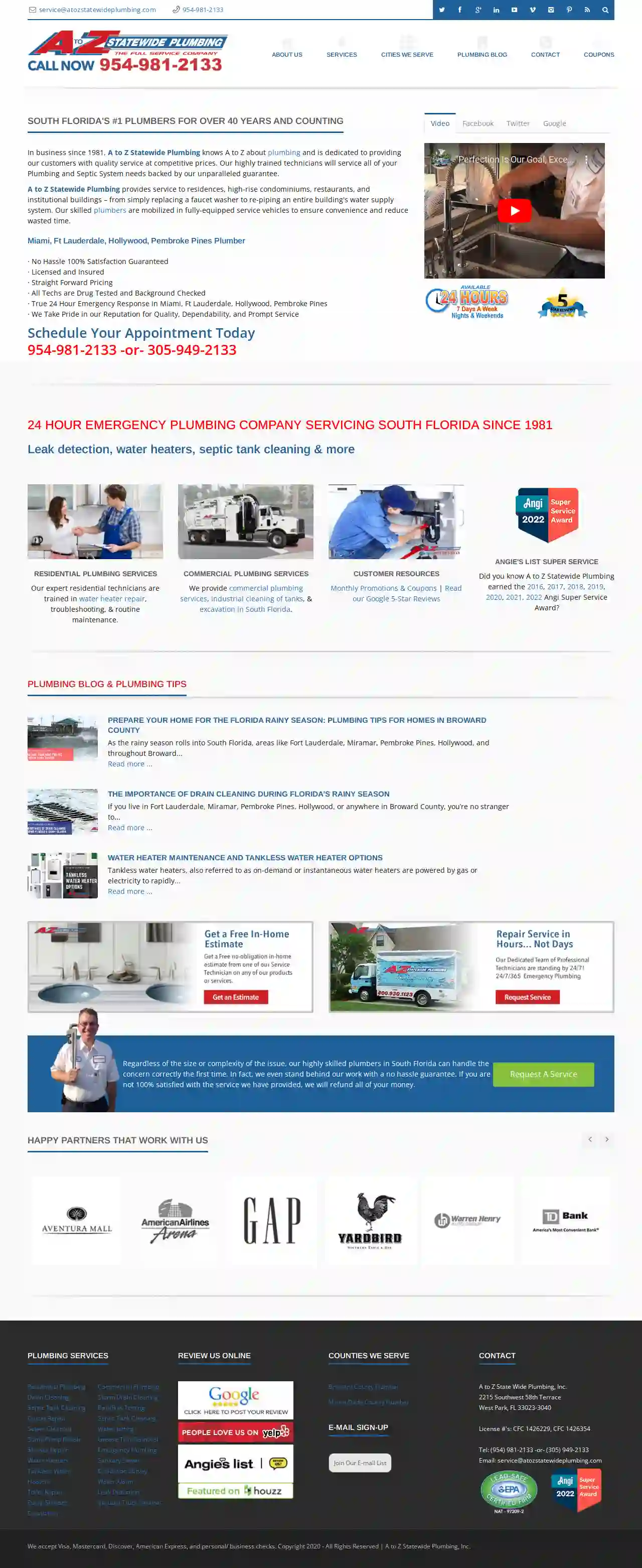
A to Z Statewide Plumbing Inc.
4.8579 reviews2215 Southwest 58th Terrace, West Park, 33023-3040, USDo you need emergency plumbing services? A To Z Statewide Plumbing offers fast and effective emergency residential and commercial plumbing services. We’re available 24 hours a day, 7 days a week. Our highly trained plumbing experts are ready to assist you. We’re available 365 days of the year. If you have a plumbing emergency on a holiday, we’re here to help. Our expert plumbing team is standing by to assist you. We service all residential, commercial, industrial and municipalities located throughout Dade and Broward Counties. Contact us by filling out the contact form below. You may also reach us at any of the numbers below. A plumbing expert will contact you immediately. You’ll get excellent service and low upfront pricing with no surprises. Available 24/7 for 365 days a year
- Services
- Why Us?
- Gallery
Get Quote
Discovery Hydrovac
4.86 reviews909 Soule Street, West Sacramento, 95691, USDiscover our Difference Discovery Hydrovac is a respected hydro and air vacuum service provider that supports the ever-expanding oil, gas, utility, and construction industries. At Discovery Hydrovac, we use state-of-the-art technology to safely and efficiently perform subsurface utility locating, (potholing/daylighting) hydro excavation, air excavation, and ground-penetrating radar (GPR) scanning. With the latest equipment, extensive project knowledge, and industry-leading operators, we can assist you through all phases of your project and ensure everything gets done in the safest and most cost-effective way possible. What we're proud of WOMEN OWNED AND OPERATED Nationally Certified through WBENC and WOSB. IN BUSINESS SINCE 2012 Serving the industry for almost a decade.
- Services
- Why Us?
- Our Team
- Gallery
Get Quote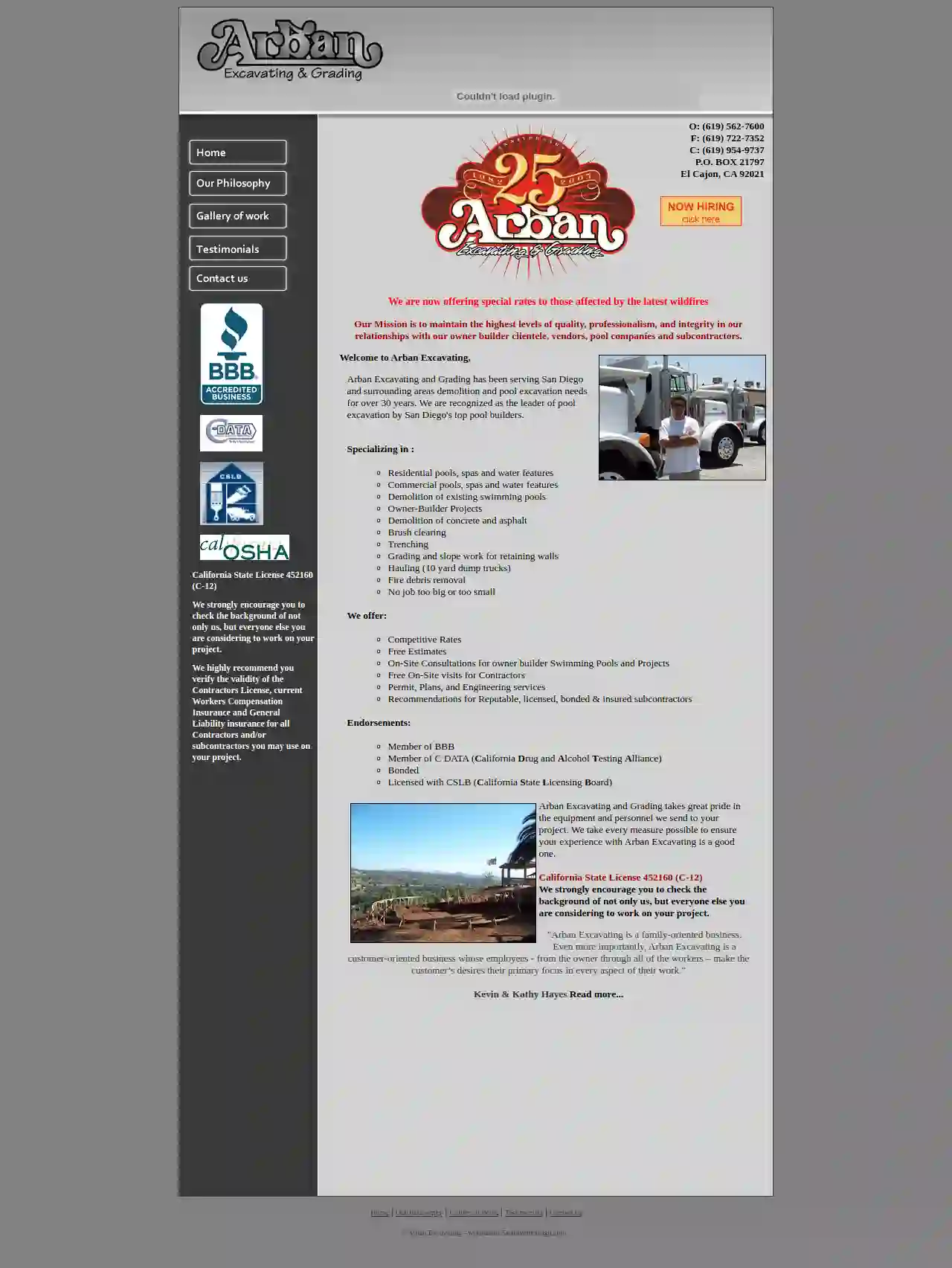
Arban Excavating & Grading
51 reviewsP.O. BOX 21797, El Cajon, 92021, USWelcome to Arban Excavating Arban Excavating and Grading has been serving San Diego and surrounding areas demolition and pool excavation needs for over 30 years. We are recognized as the leader of pool excavation by San Diego's top pool builders. Our Mission is to maintain the highest levels of quality, professionalism, and integrity in our relationships with our owner builder clientele, vendors, pool companies and subcontractors. Arban Excavating is a family-oriented business. Even more importantly, Arban Excavating is a customer-oriented business whose employees - from the owner through all of the workers – make the customer’s desires their primary focus in every aspect of their work. We strongly encourage you to check the background of not only us, but everyone else you are considering to work on your project. We highly recommend you verify the validity of the Contractors License, current Workers Compensation Insurance and General Liability insurance for all Contractors and/or subcontractors you may use on your project.
- Services
- Why Us?
- Testimonials
- Gallery
Get Quote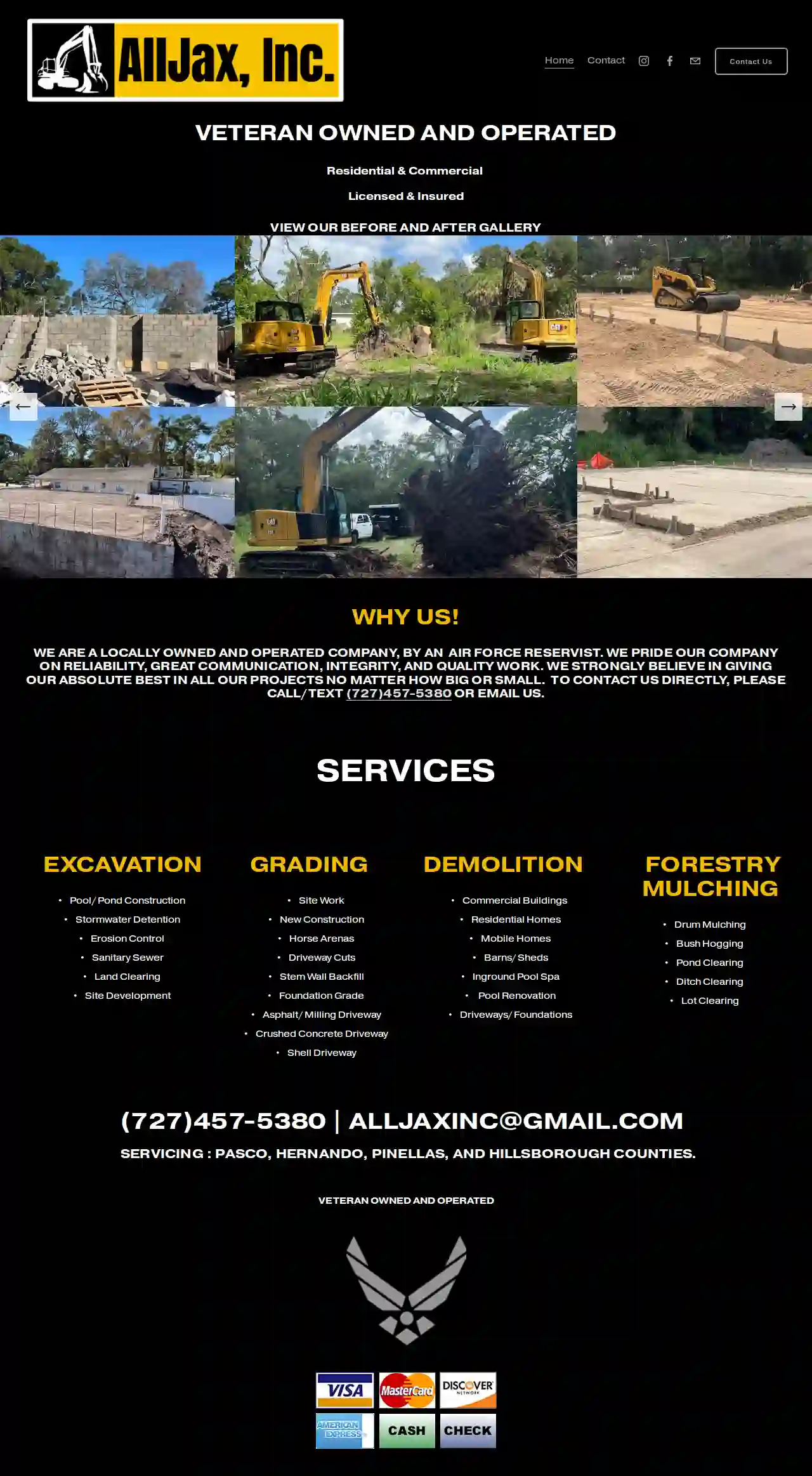
AllJax Inc Excavation, Forestry Mulching & Pond Clearing
4.935 reviewsDavis, USAllJaxInc is a locally owned and operated company, run by an Air Force reservist. We take pride in our reliability, excellent communication, integrity, and high-quality work. We are committed to delivering our best on every project, big or small. We are dedicated to providing exceptional service to our clients in Pasco, Hernando, Pinellas, and Hillsborough Counties. Our team is experienced in a wide range of services, including excavation, pool and pond construction, stormwater detention, erosion control, sanitary sewer, land clearing, site development, forestry, demolition, and grading. We are fully licensed and insured, and we are proud to be a Veteran Owned and Operated business. To contact us directly, please call/text (727)457-5380 or Email Us.
- Services
- Why Us?
- Gallery
Get Quote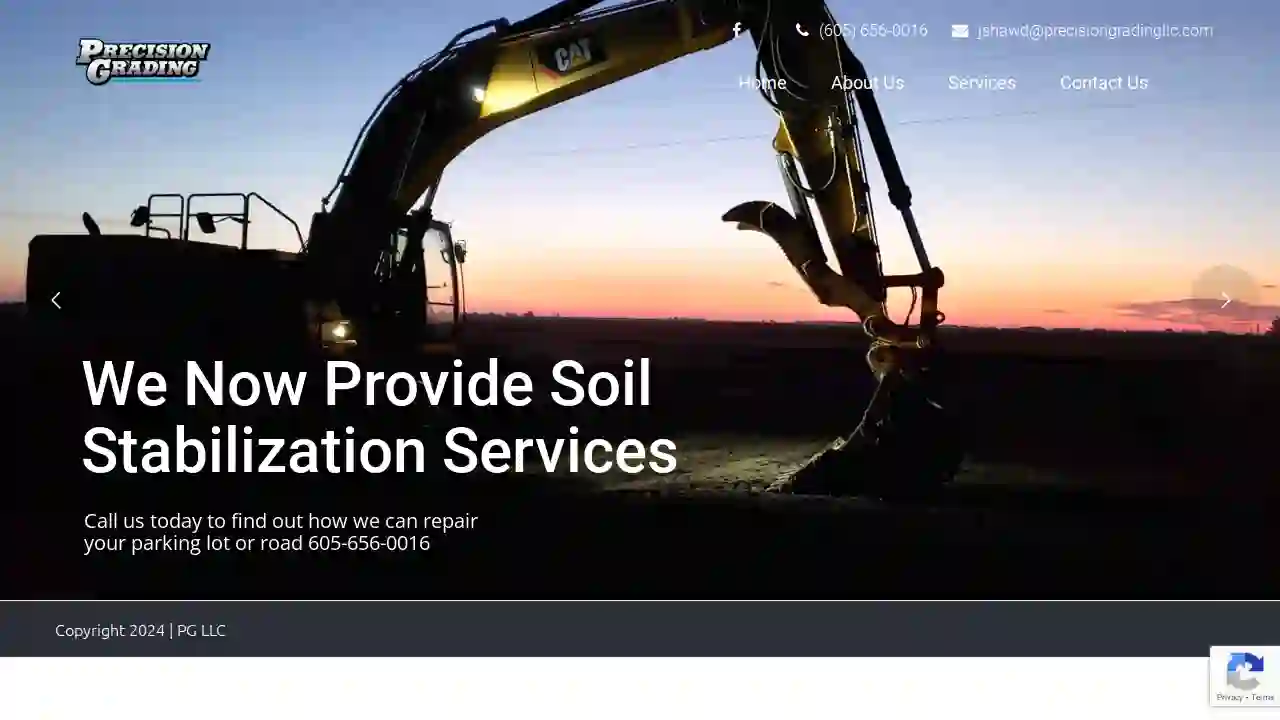
Precision Grading LLC
4.73 reviewsServing Eastern South Dakota in Mitchell, SD and Western South Dakota in Rapid City, Mitchell, USAbout Precision Grading LLC Precision Grading LLC is a professional grading and excavating contractor located in Eastern South Dakota. We specialize in providing high-quality GPS and Laser site development, grading, and excavation services to meet the needs of our clients. Our team is committed to delivering exceptional results, working closely with you to ensure your project is completed on time and within budget. We take pride in our attention to detail and our commitment to safety. Whether you need excavation for a new construction project, grading for a parking lot, or any other site development services, Precision Grading LLC has the experience and expertise to handle your project with precision and efficiency.
- Services
- Why Us?
- Gallery
Get Quote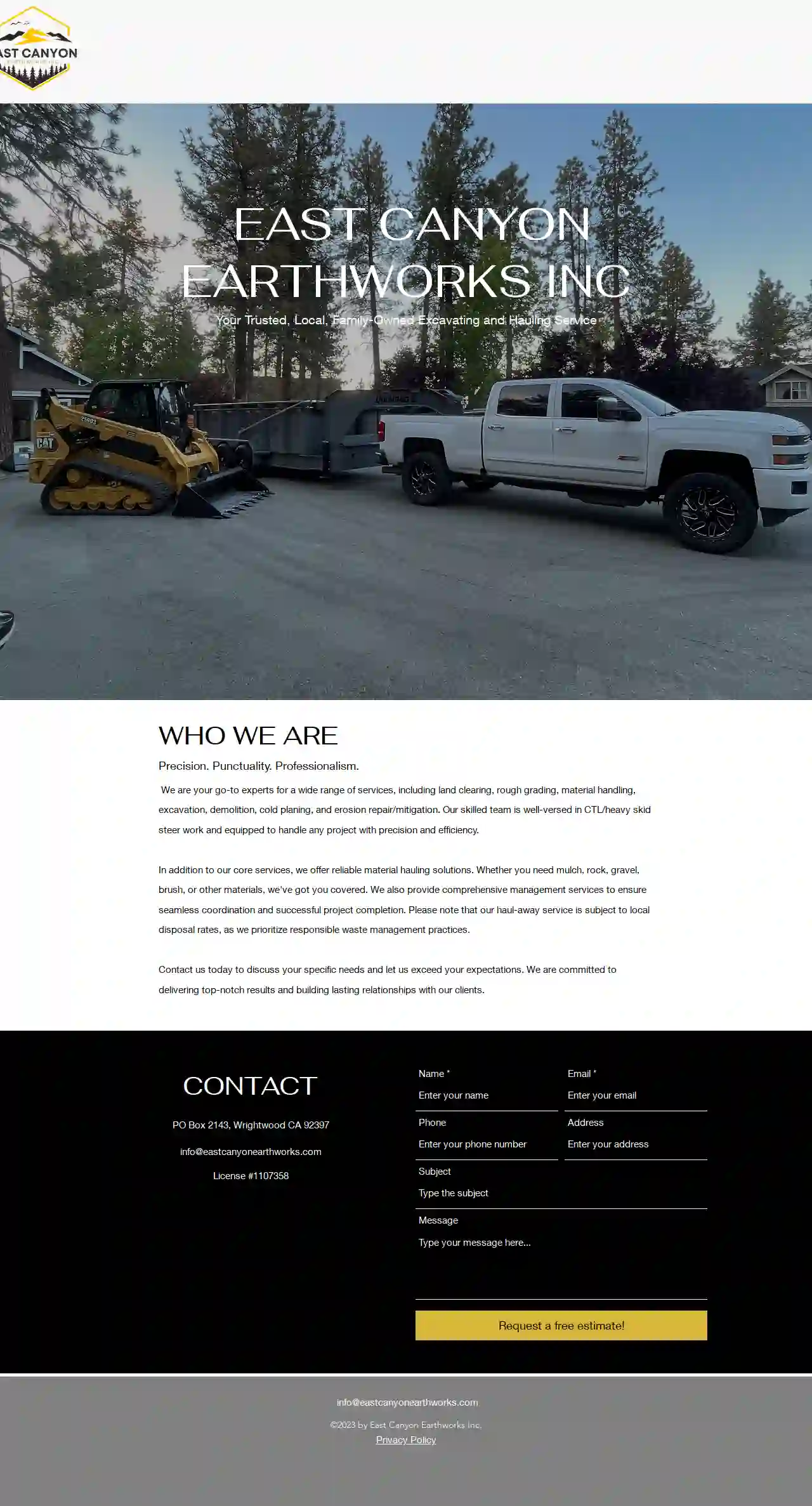
East Canyon Earthworks Inc
54 reviewsPO Box 2143, Wrightwood, 92397, USEAST CANYON EARTHWORKS INC Your Trusted, Local, Family-Owned Excavating and Hauling Service WHO WE ARE Precision. Punctuality. Professionalism. We are your go-to experts for a wide range of services, including land clearing, rough grading, material handling, excavation, demolition, cold planing, and erosion repair/mitigation. Our skilled team is well-versed in CTL/heavy skid steer work and equipped to handle any project with precision and efficiency. In addition to our core services, we offer reliable material hauling solutions. Whether you need mulch, rock, gravel, brush, or other materials, we've got you covered. We also provide comprehensive management services to ensure seamless coordination and successful project completion. Please note that our haul-away service is subject to local disposal rates, as we prioritize responsible waste management practices. Contact us today to discuss your specific needs and let us exceed your expectations. We are committed to delivering top-notch results and building lasting relationships with our clients.
- Services
- Why Us?
- Gallery
Get Quote
Riverside Excavating & Restoration
51 reviews2501 Chatham Rd, Springfield, 62704, USQuality Work at Competitive Rates We provide exceptional service in: Excavating Grading Drainage Landscaping Hardscapes Seeding With my experience and know-how, I offer this service at an extremely competitive rate while not compromising on a quality finish. Get in touch to learn more.
- Services
- Why Us?
- Gallery
Get Quote
critical path solutions llc
54 reviews109 Gillespie Street, Fayetteville, 28301, USBuilding Relationships Through Creative Design & Quality Construction. Critical Path Solutions LLC (CPS) is a Fayetteville based General Contractor organized to assist businesses with consulting and management services as well as construction needs. Our Mission is to guide our clients ideas from sketches to bricks and mortar while maintaining the highest level of professionalism, integrity, honesty and fairness in our relationships.
- Services
- Why Us?
- Gallery
Get Quote
Rivard's Earthworks Inc.
52 reviewsSacramento, USRivard's Earthworks: Your Trusted Excavation Partner in Northern California Rivard's Earthworks is a locally owned and operated excavation company dedicated to providing high-quality services for both residential and commercial projects. We specialize in site preparation, excavation, grading, and fine detail work, ensuring your project is completed to the highest standards. We understand that every project is unique, and we take the time to listen to your needs and provide personalized solutions. Our team is committed to delivering exceptional service, exceeding expectations, and building lasting relationships with our clients. From the initial consultation to the final cleanup, we handle every aspect of your project with care and precision. We are passionate about our work and take pride in transforming your vision into reality. Contact us today for a free estimate and let us help you bring your project to life.
- Services
- Why Us?
- Testimonials
- Gallery
Get Quote
Over 22,076+ Excavation Pros on our platform
Our excavation companies operate in Soquel & surroundings!
ExcavationHQ has curated and vetted Top Excavation Companies in Soquel. Find a trustworthy business today.
Frequently Asked Questions About Demolition Contractors
- Experience: Look for companies with a proven track record and years of experience in the demolition industry.
- Licensing and Insurance: Ensure the contractor is properly licensed to operate in your area and carries adequate insurance to protect you from liability.
- Safety Record: Inquire about their safety protocols and accident history. A reputable contractor prioritizes safety.
- References and Reviews: Ask for references from past clients and check online reviews to gauge their reputation and customer satisfaction.
- Professionalism: Choose a company that communicates clearly, provides detailed estimates, and has a courteous and responsive team.
- General Liability Insurance: Covers bodily injury or property damage to third parties caused by the contractor's negligence.
- Workers' Compensation Insurance: Provides benefits to workers injured on the job.
- Pollution Liability Insurance: Covers costs associated with environmental contamination caused by demolition activities.
- Professional Liability Insurance: Protects against claims of negligence or errors in professional services, such as demolition planning or consulting.
How do I find a reputable demolition contractor?
What is the difference between demolition and deconstruction?
Demolition: Typically involves bringing down a structure quickly and efficiently, often using heavy machinery and potentially explosives. The primary goal is to clear the site.
Deconstruction: Focuses on carefully dismantling a building piece by piece to salvage reusable materials. It prioritizes minimizing waste and environmental impact, often involving manual labor and specialized tools.
The choice between demolition and deconstruction depends on the project's objectives, budget, and environmental considerations.
What is the importance of insurance in demolition projects?
How long does a demolition project take?
How do I find a reputable demolition contractor?
- Experience: Look for companies with a proven track record and years of experience in the demolition industry.
- Licensing and Insurance: Ensure the contractor is properly licensed to operate in your area and carries adequate insurance to protect you from liability.
- Safety Record: Inquire about their safety protocols and accident history. A reputable contractor prioritizes safety.
- References and Reviews: Ask for references from past clients and check online reviews to gauge their reputation and customer satisfaction.
- Professionalism: Choose a company that communicates clearly, provides detailed estimates, and has a courteous and responsive team.
What is the difference between demolition and deconstruction?
Demolition: Typically involves bringing down a structure quickly and efficiently, often using heavy machinery and potentially explosives. The primary goal is to clear the site.
Deconstruction: Focuses on carefully dismantling a building piece by piece to salvage reusable materials. It prioritizes minimizing waste and environmental impact, often involving manual labor and specialized tools.
The choice between demolition and deconstruction depends on the project's objectives, budget, and environmental considerations.
What is the importance of insurance in demolition projects?
- General Liability Insurance: Covers bodily injury or property damage to third parties caused by the contractor's negligence.
- Workers' Compensation Insurance: Provides benefits to workers injured on the job.
- Pollution Liability Insurance: Covers costs associated with environmental contamination caused by demolition activities.
- Professional Liability Insurance: Protects against claims of negligence or errors in professional services, such as demolition planning or consulting.